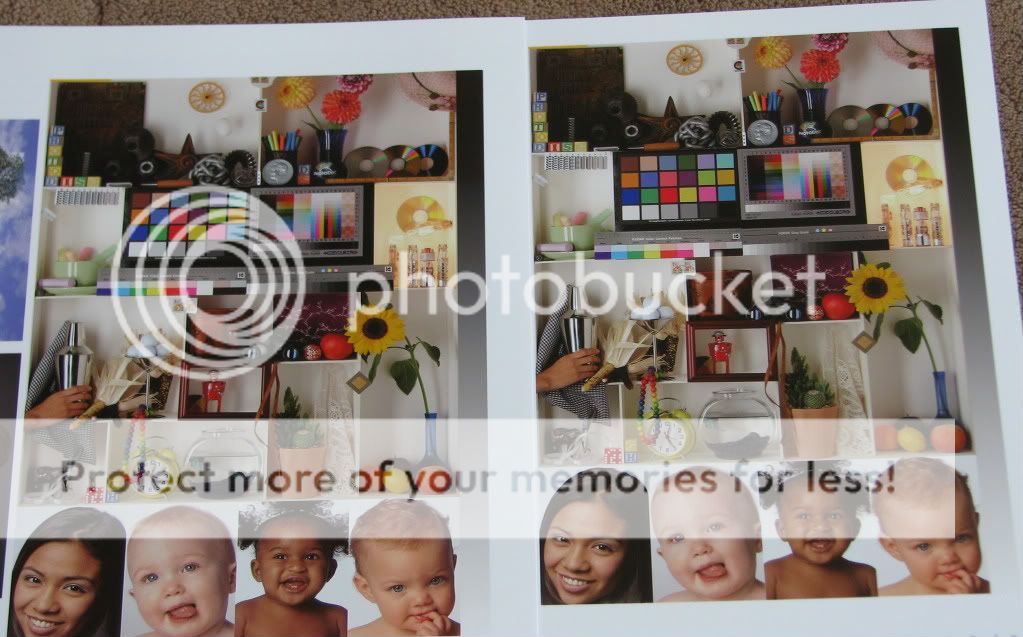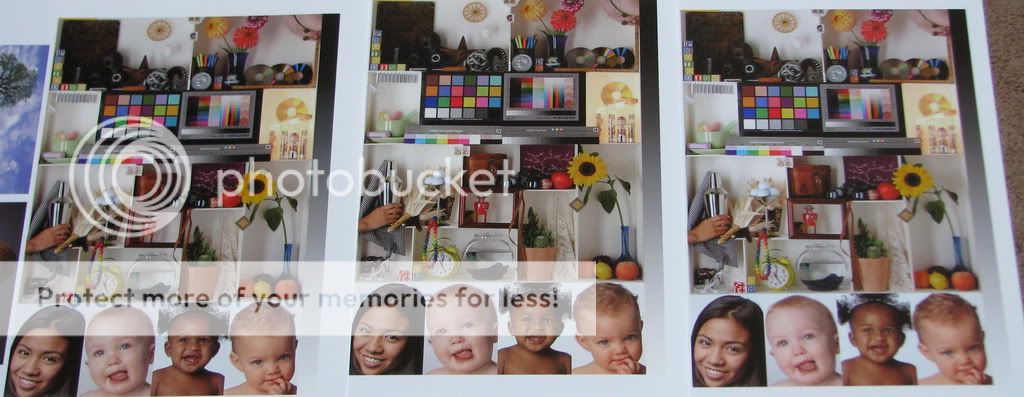- Thread starter
- #21
Hi.
Larry (TXavi8tor), reading your arguments, once more, I am convinced to finally buy a Pro9000.
But before to buy it, I want to download the profiles of each printer to compare with SoftProof. Really it is not useful because, with it, I will have an approximate idea of the colors with OEM inks. But it is not my case. I will use third party inks.
Then I see once more, the very few color comparisons published, between Epson printers with Pigmented inks and the Pro9000 like this:
http://www.photo-i.co.uk/Reviews/interactive/Canon Pro 9000/page-6.html
In this comparison is not present a R1900 but is present a R2400 and a R1800. On other comparisons that I saw the R1900 seemed to have better colors than the R2400 and the R1800.
Here the Pro900 has non vibrant and dark colors. Specially dark are the green and orange colors.
I don't know if the reason is that's was an old Pro9000 not the Pro9000 MKII or due to a not good paper.
And I think that I must to give an opportunity to the new Epson coated anticlog, and to their details and colors on shadows.
After, I think about clogs and on a possible metamerism and bronzing of pigmented inks.
And I think on your sentences, like:
"a printer that doesn't print, or produces prints with banding, streaking, puddling, etc. has NO gamut, regardless of its theoretical advantages"
"No output=no gamut. "
"My approach is to use hardware that is reliable for me"
And you have reason.
I will compare the sofprroft results on a CS4, to understand why the colors of the Pro9000 are so dark and muted.
Thank you very much.
Xavi.
Larry (TXavi8tor), reading your arguments, once more, I am convinced to finally buy a Pro9000.
But before to buy it, I want to download the profiles of each printer to compare with SoftProof. Really it is not useful because, with it, I will have an approximate idea of the colors with OEM inks. But it is not my case. I will use third party inks.
Then I see once more, the very few color comparisons published, between Epson printers with Pigmented inks and the Pro9000 like this:
http://www.photo-i.co.uk/Reviews/interactive/Canon Pro 9000/page-6.html
In this comparison is not present a R1900 but is present a R2400 and a R1800. On other comparisons that I saw the R1900 seemed to have better colors than the R2400 and the R1800.
Here the Pro900 has non vibrant and dark colors. Specially dark are the green and orange colors.
I don't know if the reason is that's was an old Pro9000 not the Pro9000 MKII or due to a not good paper.
And I think that I must to give an opportunity to the new Epson coated anticlog, and to their details and colors on shadows.
After, I think about clogs and on a possible metamerism and bronzing of pigmented inks.
And I think on your sentences, like:
"a printer that doesn't print, or produces prints with banding, streaking, puddling, etc. has NO gamut, regardless of its theoretical advantages"
"No output=no gamut. "
"My approach is to use hardware that is reliable for me"
And you have reason.
I will compare the sofprroft results on a CS4, to understand why the colors of the Pro9000 are so dark and muted.
Thank you very much.
Xavi.



